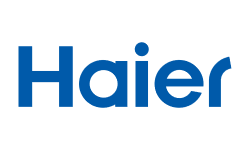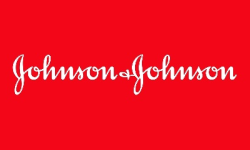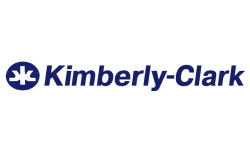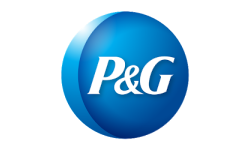
Global Dietary Fibers Market by Product (Soluble, Insoluble), by Raw Material (Fruits & Vegetables, Cereals & Grains) and Region (North America, Latin America, Europe, Asia Pacific and Middle East & Africa), Forecast To 2028
Summary of the Report
Global dietary fibers market was worth USD 39.8 Billion in 2019. It is projected to grow at an 8.9% compound annual growth rate (CAGR), between 2020 and 2027. Market growth will be driven by rising product demand due to consumer awareness about healthy eating habits and active lifestyles. Consumers are more aware of the health benefits of fiber-based foods due to rising cases and deaths from heart disease, cancer, diabetes, and other diseases. Market growth is expected to be fueled by this. According to the National Institutes of Health's research, 60-70 million Americans have severe digestive problems. According to the Harvard School of Public Health both children and adults need at least 20-30 grams of dietary fiber daily. Consuming dietary fibers reduces your risk of developing many health conditions, including diabetes, heart disease and Diverticular disease.
The market will be driven by high demand in the U.S. for foods rich with fiber, prebiotics, or probiotics. To meet shifting consumer demand for dietary fiber-based products, many of the nation's top food and beverage brands, including Nestle, Kellogg Co. and NOW Foods, FiberOne and NuGo Nutrition, offer functional foods & beverages.
Dietary fibers help prevent constipation in humans and keep the digestive system healthy. According to the European Food Safety Authority, fiber-rich foods can improve weight maintenance, reduce type 2 diabetes, and help prevent cardiovascular disease. Irritable Bowel Syndrome (IBS), or IBS, is often advised to increase and decrease the fiber content of their diet. This will also help increase the demand for dietary fibre supplements among IBS sufferers around the world.
While dietary fibers are most well-known for their ability to support physiological functions, they cannot be eaten. Fibers are resistant to hydrolysis so they can't be used as energy sources. It is therefore difficult to incorporate fibers in food and beverage products.
It is important to combine dietary fibers in food products. This takes time and can be costly. These fibers are expensive because they take up a lot of product volume and do not contribute to energy. The economic impact of high prices for dietary fibers and the differences in technology used to obtain them is likely to limit market growth.
Raw Material Insights
Cereals and grains dominated the market, accounting for 48.0% of global revenue in 2019. These fibers can reduce the risk of heart disease and stroke. Flaxseeds and beans are rich in fibers that help lower low-density lipoprotein levels, which in turn reduces total cholesterol.
Beta-glucan and pentose are some of the most important soluble fibers from whole grains such as wheat, rye and barley. While insoluble fibers like lignin and cellulose can be obtained from cereals such as maize, rice and wheat bran, hemicellulose and lignin are also available from whole grains. Market growth for dietary fibers is expected to be driven by the increasing importance of beta-glucan in the pharmaceutical and nutraceutical industries as an immune booster.
From 2020 to 2027, the fastest CAGR is expected to be in the fruits and vegetables segment. High-fiber foods have lower energy densities and offer fewer calories per gram. High-fiber foods can be bulky and filling.
In contrast, soluble fibers from fruits like citrus, strawberries, apples and potatoes form a gel which delays both the transit of food through the digestive tract and the emptying of your stomach.
The dietary fibers that are derived from fruits and vegetables can help to regulate blood sugar and prevent an increase in insulin. This is a risk factor for obesity and diabetes. The consumption of this product will likely increase the overall demand.
Product Insights
In 2019, the market was led by soluble dietary fibers, which accounted for 56.0% of global volume. Soluble dietary fibres are available for animal and human consumption from fruits, vegetables, nuts, seeds, cereals, and whole grains. Fibers, such as fructooligosaccharide (FOS) and inulin, obtained from vegetables, aids in regulating the function of the intestines; whereas pectin, obtained from fruits, such as pears and apples, improves acid reflux problems and promotes gut health.
According to the type of soluble diet fibers, the market share for inulin is expected to be the largest in 2027. It is used in many food and beverage applications as a flavor enhancer and as a fat & sugar substitute in many food applications such as bakery and confectionery products and frozen dairy desserts. Inulin research and development activities, as well as other types of soluble fibres such as pectin and polydextrose, will increase the product range on the market in the coming years.
The fastest growth in insoluble dietary fibers is expected to be over the forecast period. This is due to increasing consumption of functional food, changing diet patterns and increased health-consciousness. Insoluble dietary fibers from oats and wheat, corn, potatoes, peas and rice help to reduce the risk of various health conditions such as high cholesterol, hyperglycemia, constipation and obesity.
The market leader in 2019 was cellulose based on the types and insoluble dietary fibres. Cellulose can be used in many food applications such as meat products, poultry products, and bakery products. Cellulose fibers with high oil- and moisture-holding capacities are used in processed meat applications to preserve the moisture levels. Cellulose with low water absorption is used to enrich products such as bread, cookies and pastry fillings.
Application Insights
Food & Beverage applications dominated the market, accounting for over 44% of global revenue in 2019. The key factor driving the market is the consumer's confidence in the health benefits of dietary fibers. The market will continue to grow due to the increasing consumption of functional and healthy food products in the coming years.
Breakfast cereals are in high demand because of their better nutritional profile. This high demand can also be attributed to rising concerns about the health effects of fast food and processed foods, as well as the over-consumption and abuse of calories.
Many food manufacturers have also introduced new products to meet this demand. Ingredion Inc., Cargill, Inc., and other major companies continue to invest in research and development with the goal of introducing innovative products to the insoluble and soluble dietary fibers market space.
The projected growth in revenue from animal feed applications is 9.0%. These products are used to make animal feed products due to their health-promoting qualities, such as balancing intestinal microflora and maintaining intestinal immunity. Because dietary fibers are important in maintaining the optimal health and performance of animals they will be in high demand for many years to come.
Regional Insights
Asia Pacific dominated the market in 2019, accounting for 39% of global revenue. Over the next few decades, countries such as China and Japan will be the top producers of food and beverages. The Asia Pacific region is expected to see promising trends in food and beverage production over the forecast period.
The market will be driven by rising health awareness and the growing number of fitness clubs across India over the next few year. The Indian government's National Food Security Act has also played a significant role in changing dietary habits. The demand for functional and healthy foods high in fiber will increase due to the rise in consumers' purchasing power.
North America's market is expected to grow significantly in the coming years due to increased consumption of nutrient-fortified foods products. Recent economic developments and an increasing urban population have led to significant changes in lifestyles and dietary habits. Other key drivers of the North American market are the rise in fiber intake and the promising trend in functional foods production.
Over the forecast period, the demand for fortified foods and beverages such as dairy products and bakery products in the U.S., Canada and Mexico will positively impact the market. Market demand growth is expected to be boosted by the rising popularity of Greek yogurt, sweets, and health drinks over the next few year.
Market Share Insights & Key Companies
This industry requires high capital investments and complex manufacturing processes. Cost-effective manufacturing can help ensure sustainability in the global marketplace. The entry of new businesses will be hindered by various regulations set forth by the U.S. Food & Drug Administration and the European Food Safety Authority. The presence of many manufacturers will also increase barriers to entry. Cargill, Inc. spent more than USD 35 million in Europe in October 2019 to add soluble diet fibers to its existing product line of sweeteners, starches, texturizers. This strategic move marks Cargill's first in Europe to soluble dietary fibres. It was done in order to offer on-trend solutions for manufacturers of distinguished products such as bakery and confectionery goods and dairy products. The following are some of the most prominent players in the market for dietary fibers:
-
BENEO
-
ADM
-
Lonza
-
Cargill, Incorporated
-
DuPont
-
Ingredion Incorporated
-
Roquette Freres
-
Puris
-
Emsland Group
-
Kerry Inc.
-
The Green Labs LLC
-
Nexira
-
Tate & Lyle
-
Farbest Brands
-
J. RETTENMAIER & SOHNE GmbH + Co KG
-
Taiyo International
-
AGT Food and Ingredients
-
Batory Foods
Up Market Research published a new report titled “Dietary Fibers Market research report which is segmented by Product (Soluble, Insoluble), by Raw Material (Fruits & Vegetables, Cereals & Grains), By Players/Companies Kerry Inc, DuPont, J RETTENMAIER & S–HNE GmbH + Co KG, Tate & Lyle, AGT Food and Ingredients, Emsland Group, Lonza, BENEO, Farbest Brands, Nexira, The Green Labs LLC, Puris, Batory Foods, Taiyo International, Roquette Fr¨res, Cargill Incorporated, ADM, Ingredion Incorporated”. As per the study the market is expected to grow at a CAGR of XX% in the forecast period.
Report Scope
| Report Attributes | Report Details |
| Report Title | Dietary Fibers Market Research Report |
| By Product | Soluble, Insoluble |
| By Raw Material | Fruits & Vegetables, Cereals & Grains |
| By Companies | Kerry Inc, DuPont, J RETTENMAIER & S–HNE GmbH + Co KG, Tate & Lyle, AGT Food and Ingredients, Emsland Group, Lonza, BENEO, Farbest Brands, Nexira, The Green Labs LLC, Puris, Batory Foods, Taiyo International, Roquette Fr¨res, Cargill Incorporated, ADM, Ingredion Incorporated |
| Regions Covered | North America, Europe, APAC, Latin America, MEA |
| Base Year | 2020 |
| Historical Year | 2018 to 2019 (Data from 2010 can be provided as per availability) |
| Forecast Year | 2028 |
| Number of Pages | 226 |
| Number of Tables & Figures | 159 |
| Customization Available | Yes, the report can be customized as per your need. |
The report covers comprehensive data on emerging trends, market drivers, growth opportunities, and restraints that can change the market dynamics of the industry. It provides an in-depth analysis of the market segments which include products, applications, and competitor analysis.

Global Dietary Fibers Market Report Segments:
The market is segmented by Product (Soluble, Insoluble), by Raw Material (Fruits & Vegetables, Cereals & Grains).
Dietary Fibers Market research report delivers a close watch on leading competitors with strategic analysis, micro and macro market trend and scenarios, pricing analysis and a holistic overview of the market situations in the forecast period. It is a professional and a detailed report focusing on primary and secondary drivers, market share, leading segments and geographical analysis. Further, key players, major collaborations, merger & acquisitions along with trending innovation and business policies are reviewed in the report.
Key Benefits for Industry Participants & Stakeholders:
- Industry drivers, restraints, and opportunities covered in the study
- Neutral perspective on the market performance
- Recent industry trends and developments
- Competitive landscape & strategies of key players
- Potential & niche segments and regions exhibiting promising growth covered
- Historical, current, and projected market size, in terms of value
- In-depth analysis of the Dietary Fibers Market
Overview of the regional outlook of the Dietary Fibers Market:
Based on region, the market is segmented into North America, Europe, Asia Pacific, Latin America and Middle East & Africa (MEA). North America region is further bifurcated into countries such as U.S., and Canada. The Europe region is further categorized into U.K., France, Germany, Italy, Spain, Russia, and Rest of Europe. Asia Pacific is further segmented into China, Japan, South Korea, India, Australia, South East Asia, and Rest of Asia Pacific. Latin America region is further segmented into Brazil, Mexico, and Rest of Latin America, and the MEA region is further divided into GCC, Turkey, South Africa, and Rest of MEA.

Highlights of The Dietary Fibers Market Report:
- The market structure and projections for the coming years.
- Drivers, restraints, opportunities, and current trends of Dietary Fibers Market.
- Historical data and forecast.
- Estimations for the forecast period 2028.
- Developments and trends in the market.
1. Soluble
2. Insoluble
7. By Raw Material:1. Fruits & Vegetables
2. Cereals & Grains
- Market scenario by region, sub-region, and country.
- Market share of the market players, company profiles, product specifications, SWOT analysis, and competitive landscape.
- Analysis regarding upstream raw materials, downstream demand, and current market dynamics.
- Government Policies, Macro & Micro economic factors are also included in the report.
We have studied the Dietary Fibers Market in 360 degrees via. both primary & secondary research methodologies. This helped us in building an understanding of the current market dynamics, supply-demand gap, pricing trends, product preferences, consumer patterns & so on. The findings were further validated through primary research with industry experts & opinion leaders across countries. The data is further compiled & validated through various market estimation & data validation methodologies. Further, we also have our in-house data forecasting model to predict market growth up to 2028.
How you may use our products:
- Correctly Positioning New Products
- Market Entry Strategies
- Business Expansion Strategies
- Consumer Insights
- Understanding Competition Scenario
- Product & Brand Management
- Channel & Customer Management
- Identifying Appropriate Advertising Appeals

Reasons to Purchase the Dietary Fibers Market Report:
- The report includes a plethora of information such as market dynamics scenario and opportunities during the forecast period
- Segments and sub-segments include quantitative, qualitative, value (USD Million,) and volume (Units Million) data.
- Regional, sub-regional, and country level data includes the demand and supply forces along with their influence on the market.
- The competitive landscape comprises share of key players, new developments, and strategies in the last three years.
- Comprehensive companies offering products, relevant financial information, recent developments, SWOT analysis, and strategies by these players.
Chapter 2 Assumptions and Acronyms Used
Chapter 3 Research Methodology
Chapter 4 Dietary Fibers Market Overview
4.1 Introduction
4.1.1 Market Taxonomy
4.1.2 Market Definition
4.1.3 Macro-Economic Factors Impacting the Market Growth
4.2 Dietary Fibers Market Dynamics
4.2.1 Market Drivers
4.2.2 Market Restraints
4.2.3 Market Opportunity
4.3 Dietary Fibers Market - Supply Chain Analysis
4.3.1 List of Key Suppliers
4.3.2 List of Key Distributors
4.3.3 List of Key Consumers
4.4 Key Forces Shaping the Dietary Fibers Market
4.4.1 Bargaining Power of Suppliers
4.4.2 Bargaining Power of Buyers
4.4.3 Threat of Substitution
4.4.4 Threat of New Entrants
4.4.5 Competitive Rivalry
4.5 Global Dietary Fibers Market Size & Forecast, 2018-2028
4.5.1 Dietary Fibers Market Size and Y-o-Y Growth
4.5.2 Dietary Fibers Market Absolute $ Opportunity
Chapter 5 Global Dietary Fibers Market Analysis and Forecast by Product
5.1 Introduction
5.1.1 Key Market Trends & Growth Opportunities by Product
5.1.2 Basis Point Share (BPS) Analysis by Product
5.1.3 Absolute $ Opportunity Assessment by Product
5.2 Dietary Fibers Market Size Forecast by Product
5.2.1 Soluble
5.2.2 Insoluble
5.3 Market Attractiveness Analysis by Product
Chapter 6 Global Dietary Fibers Market Analysis and Forecast by Raw Material
6.1 Introduction
6.1.1 Key Market Trends & Growth Opportunities by Raw Material
6.1.2 Basis Point Share (BPS) Analysis by Raw Material
6.1.3 Absolute $ Opportunity Assessment by Raw Material
6.2 Dietary Fibers Market Size Forecast by Raw Material
6.2.1 Fruits & Vegetables
6.2.2 Cereals & Grains
6.3 Market Attractiveness Analysis by Raw Material
Chapter 7 Global Dietary Fibers Market Analysis and Forecast by Region
7.1 Introduction
7.1.1 Key Market Trends & Growth Opportunities by Region
7.1.2 Basis Point Share (BPS) Analysis by Region
7.1.3 Absolute $ Opportunity Assessment by Region
7.2 Dietary Fibers Market Size Forecast by Region
7.2.1 North America
7.2.2 Europe
7.2.3 Asia Pacific
7.2.4 Latin America
7.2.5 Middle East & Africa (MEA)
7.3 Market Attractiveness Analysis by Region
Chapter 8 Coronavirus Disease (COVID-19) Impact
8.1 Introduction
8.2 Current & Future Impact Analysis
8.3 Economic Impact Analysis
8.4 Government Policies
8.5 Investment Scenario
Chapter 9 North America Dietary Fibers Analysis and Forecast
9.1 Introduction
9.2 North America Dietary Fibers Market Size Forecast by Country
9.2.1 U.S.
9.2.2 Canada
9.3 Basis Point Share (BPS) Analysis by Country
9.4 Absolute $ Opportunity Assessment by Country
9.5 Market Attractiveness Analysis by Country
9.6 North America Dietary Fibers Market Size Forecast by Product
9.6.1 Soluble
9.6.2 Insoluble
9.7 Basis Point Share (BPS) Analysis by Product
9.8 Absolute $ Opportunity Assessment by Product
9.9 Market Attractiveness Analysis by Product
9.10 North America Dietary Fibers Market Size Forecast by Raw Material
9.10.1 Fruits & Vegetables
9.10.2 Cereals & Grains
9.11 Basis Point Share (BPS) Analysis by Raw Material
9.12 Absolute $ Opportunity Assessment by Raw Material
9.13 Market Attractiveness Analysis by Raw Material
Chapter 10 Europe Dietary Fibers Analysis and Forecast
10.1 Introduction
10.2 Europe Dietary Fibers Market Size Forecast by Country
10.2.1 Germany
10.2.2 France
10.2.3 Italy
10.2.4 U.K.
10.2.5 Spain
10.2.6 Russia
10.2.7 Rest of Europe
10.3 Basis Point Share (BPS) Analysis by Country
10.4 Absolute $ Opportunity Assessment by Country
10.5 Market Attractiveness Analysis by Country
10.6 Europe Dietary Fibers Market Size Forecast by Product
10.6.1 Soluble
10.6.2 Insoluble
10.7 Basis Point Share (BPS) Analysis by Product
10.8 Absolute $ Opportunity Assessment by Product
10.9 Market Attractiveness Analysis by Product
10.10 Europe Dietary Fibers Market Size Forecast by Raw Material
10.10.1 Fruits & Vegetables
10.10.2 Cereals & Grains
10.11 Basis Point Share (BPS) Analysis by Raw Material
10.12 Absolute $ Opportunity Assessment by Raw Material
10.13 Market Attractiveness Analysis by Raw Material
Chapter 11 Asia Pacific Dietary Fibers Analysis and Forecast
11.1 Introduction
11.2 Asia Pacific Dietary Fibers Market Size Forecast by Country
11.2.1 China
11.2.2 Japan
11.2.3 South Korea
11.2.4 India
11.2.5 Australia
11.2.6 South East Asia (SEA)
11.2.7 Rest of Asia Pacific (APAC)
11.3 Basis Point Share (BPS) Analysis by Country
11.4 Absolute $ Opportunity Assessment by Country
11.5 Market Attractiveness Analysis by Country
11.6 Asia Pacific Dietary Fibers Market Size Forecast by Product
11.6.1 Soluble
11.6.2 Insoluble
11.7 Basis Point Share (BPS) Analysis by Product
11.8 Absolute $ Opportunity Assessment by Product
11.9 Market Attractiveness Analysis by Product
11.10 Asia Pacific Dietary Fibers Market Size Forecast by Raw Material
11.10.1 Fruits & Vegetables
11.10.2 Cereals & Grains
11.11 Basis Point Share (BPS) Analysis by Raw Material
11.12 Absolute $ Opportunity Assessment by Raw Material
11.13 Market Attractiveness Analysis by Raw Material
Chapter 12 Latin America Dietary Fibers Analysis and Forecast
12.1 Introduction
12.2 Latin America Dietary Fibers Market Size Forecast by Country
12.2.1 Brazil
12.2.2 Mexico
12.2.3 Rest of Latin America (LATAM)
12.3 Basis Point Share (BPS) Analysis by Country
12.4 Absolute $ Opportunity Assessment by Country
12.5 Market Attractiveness Analysis by Country
12.6 Latin America Dietary Fibers Market Size Forecast by Product
12.6.1 Soluble
12.6.2 Insoluble
12.7 Basis Point Share (BPS) Analysis by Product
12.8 Absolute $ Opportunity Assessment by Product
12.9 Market Attractiveness Analysis by Product
12.10 Latin America Dietary Fibers Market Size Forecast by Raw Material
12.10.1 Fruits & Vegetables
12.10.2 Cereals & Grains
12.11 Basis Point Share (BPS) Analysis by Raw Material
12.12 Absolute $ Opportunity Assessment by Raw Material
12.13 Market Attractiveness Analysis by Raw Material
Chapter 13 Middle East & Africa (MEA) Dietary Fibers Analysis and Forecast
13.1 Introduction
13.2 Middle East & Africa (MEA) Dietary Fibers Market Size Forecast by Country
13.2.1 Saudi Arabia
13.2.2 South Africa
13.2.3 UAE
13.2.4 Rest of Middle East & Africa (MEA)
13.3 Basis Point Share (BPS) Analysis by Country
13.4 Absolute $ Opportunity Assessment by Country
13.5 Market Attractiveness Analysis by Country
13.6 Middle East & Africa (MEA) Dietary Fibers Market Size Forecast by Product
13.6.1 Soluble
13.6.2 Insoluble
13.7 Basis Point Share (BPS) Analysis by Product
13.8 Absolute $ Opportunity Assessment by Product
13.9 Market Attractiveness Analysis by Product
13.10 Middle East & Africa (MEA) Dietary Fibers Market Size Forecast by Raw Material
13.10.1 Fruits & Vegetables
13.10.2 Cereals & Grains
13.11 Basis Point Share (BPS) Analysis by Raw Material
13.12 Absolute $ Opportunity Assessment by Raw Material
13.13 Market Attractiveness Analysis by Raw Material
Chapter 14 Competition Landscape
14.1 Dietary Fibers Market: Competitive Dashboard
14.2 Global Dietary Fibers Market: Market Share Analysis, 2019
14.3 Company Profiles (Details – Overview, Financials, Developments, Strategy)
14.3.1 Kerry Inc
14.3.2 DuPont
14.3.3 J RETTENMAIER & S–HNE GmbH + Co KG
14.3.4 Tate & Lyle
14.3.5 AGT Food and Ingredients
14.3.6 Emsland Group
14.3.7 Lonza
14.3.8 BENEO
14.3.9 Farbest Brands
14.3.10 Nexira
14.3.11 The Green Labs LLC
14.3.12 Puris
14.3.13 Batory Foods
14.3.14 Taiyo International
14.3.15 Roquette Fr¨res
14.3.16 Cargill Incorporated
14.3.17 ADM
14.3.18 Ingredion Incorporated
The global Dietary Fibers market has been segmented based on
By Product
- Soluble
- Insoluble
- Fruits & Vegetables
- Cereals & Grains
- Asia Pacific
- North America
- Latin America
- Europe
- Middle East & Africa
- Kerry Inc
- DuPont
- J RETTENMAIER & S–HNE GmbH + Co KG
- Tate & Lyle
- AGT Food and Ingredients
- Emsland Group
- Lonza
- BENEO
- Farbest Brands
- Nexira
- The Green Labs LLC
- Puris
- Batory Foods
- Taiyo International
- Roquette Fr¨res
- Cargill Incorporated
- ADM
- Ingredion Incorporated
Related Reports
Some other reports from this category!



















